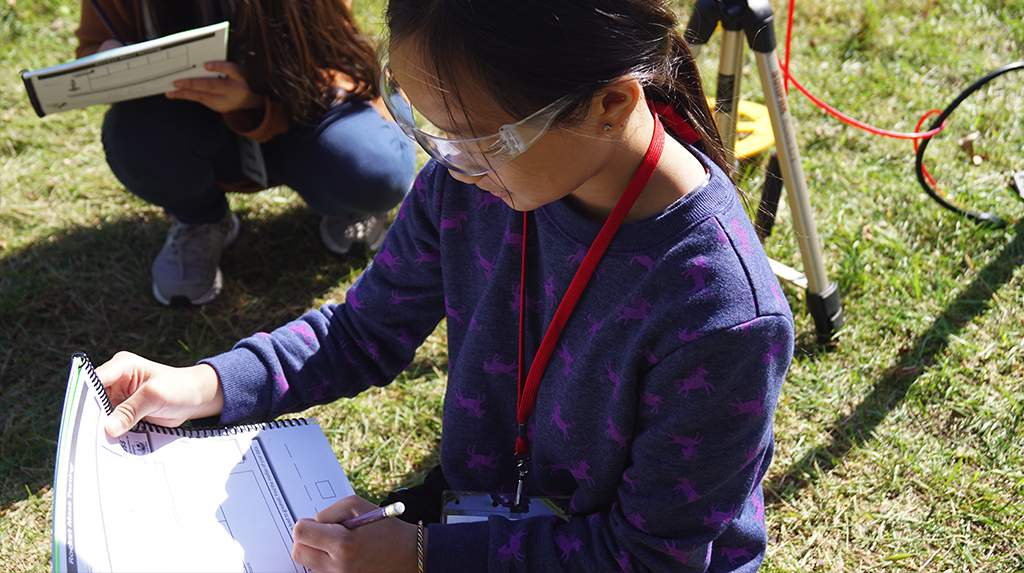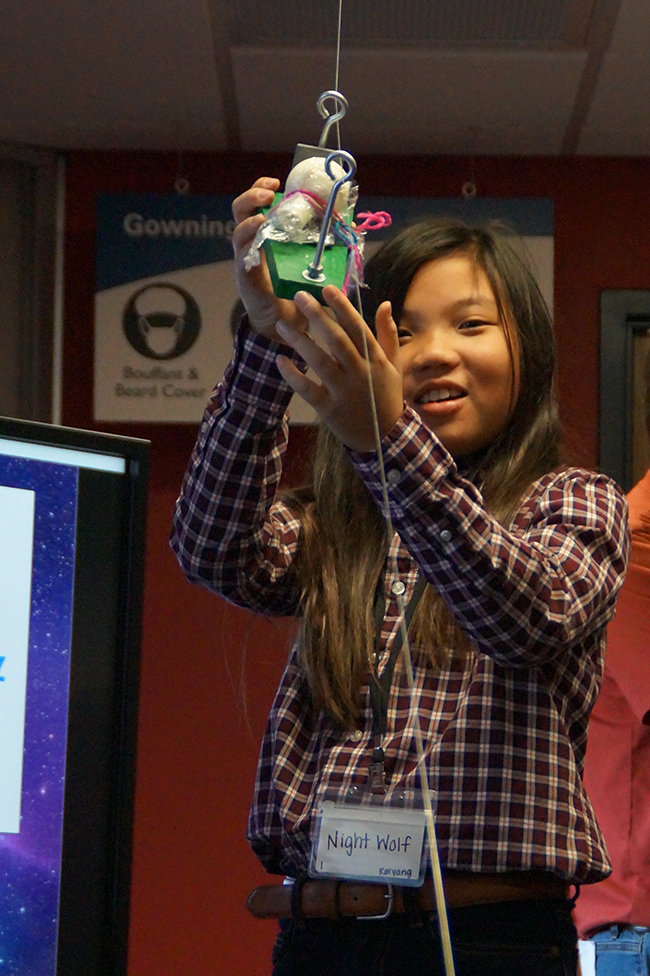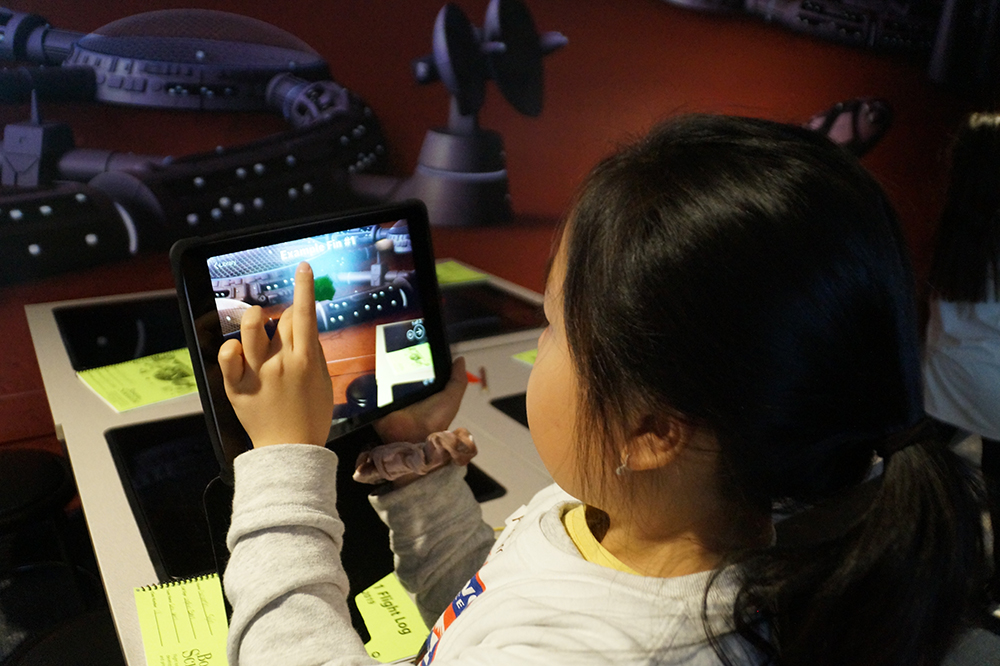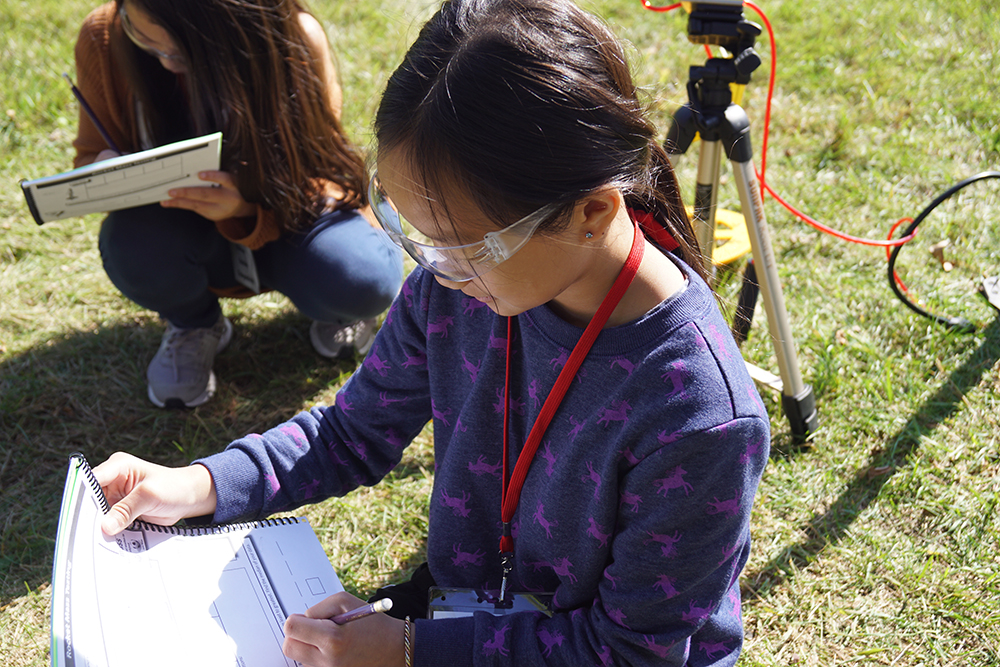Brief
STEM Mindset
Supporting Girls’ Ongoing Engagement and Success in STEM
Connected Science Learning October-December 2019 (Volume 1, Issue 12)
By Jeanna R. Wieselmann

STEM (science, technology, engineering, and mathematics) mindset is critical to youths’ ongoing participation in STEM, as well as their functioning in today’s technology-rich world (e.g., Murphy 2019). This is true for all students, but it is especially important to support the development of STEM mindset among those who are underrepresented in STEM fields, including women (NSF 2017).

Credit: STARBASE Minnesota, St. Paul, MN
Self-efficacy and STEM mindset
Self-efficacy refers to one’s beliefs about personal capability and is closely linked to what they believe will likely result from their actions (Bandura 1997). People are more likely to take action if they expect a positive outcome. For example, lower self-assessments of competence are linked to lower rates of participation and lower achievement in mathematics and science (Correll 2001). A strong sense of self-efficacy can be fostered by emphasizing growth mindset within learning contexts (Silver and Stafford 2017) and helping students recognize that skills and intelligence grow in response to effort (Dweck 2000). Self-efficacy is a critical component of STEM mindset because of its links to perseverance in STEM.
Research findings related to girls’ STEM self-efficacy
A number of studies have demonstrated gender gaps related to STEM self-efficacy. Even as early as first grade, boys have more positive competence beliefs in mathematics than girls (Eccles et al. 1993). This trend continues as students age; despite equal mathematics ability, high school boys are more likely than girls to view themselves as good at mathematics (Correll 2001). Similar findings are present in both science and engineering (e.g., Heyman, Martyna, and Bhatia 2002; Hong and Lin 2013).
My research has explored STEM self-efficacy of upper elementary and middle school students within in-school and out-of-school contexts. One study investigated fourth- and fifth-grade girls’ perceptions of themselves and STEM following a weeklong out-of-school STEM experience (Wieselmann, Roehrig, and Kim 2017). Participants described girls in general as working hard and focusing on learning more than boys, yet still described boys as inherently possessing both skill and interest in STEM subjects at school. For example, one girl shared, “Usually boys are really good at engineering and all that stuff.” Girls in this study interpreted boys’ academic struggles as a result of personal choice, not lack of ability. They did not equate diligence and success in school with STEM ability.

Credit: STARBASE Minnesota, St. Paul, MN
Another study explored students’ participation in small-group engineering activities that had multiple solutions and pathways to success (Wieselmann, Roehrig, and Kim 2017). Middle school girls struggled to navigate these open-ended activities in their formal science classroom. With no worksheet to guide their participation, girls expressed uncertainty about their ability and knowledge of whether they had successfully completed the design activity. In contrast, boys were more comfortable jumping into engineering activities and dealing with the iterative nature of engineering.
The notion of productive failure underlies both of these studies. Recognizing failure as a temporary state, as well as an opportunity for learning and improvement, is key in girls’ ongoing participation in STEM. For example, girls are more likely than boys to drop college-level engineering classes when faced with difficulties (Heyman, Martyna, and Bhatia 2002). Out-of-school learning experiences are uniquely situated to support students’ development of failure tolerance because they are not connected to scores or grades. One student I interviewed explained, “Some of the girls, they want to get a good grade, but they’re afraid that if they do it [the hands-on activity] they’ll fail, so they kind of leave it up to other people… Here at STARBASE [St. Paul, Minnesota], it’s okay if you fail, but back at school if you fail, it’s kind of like, you fail and you got it wrong, so you’re done.” This participant identified the out-of-school setting as a safer place to try new things and learn from failure for herself and her female peers.

Credit: STARBASE Minnesota, St. Paul, MN
Tips for supporting the development of girls’ STEM mindset
Out-of-school contexts present unique opportunities for fostering the development of STEM mindset, but the tips outlined below can be used in both in-school and out-of-school settings. The tips were developed with girls’ needs in mind but are beneficial for all students.
- Provide students with opportunities to engage in open-ended, complex tasks with more than one possible solution. These activities develop critical thinking, creativity, and problem-solving skills while helping students become more comfortable working with ambiguous tasks that are commonplace in STEM fields.
- Ensure that students have opportunities to see ongoing efforts result in success despite initial struggles and failures. Normalize failure and help students recognize failure as an important step in learning, such as in the engineering design process.
- Provide students with opportunities to self-assess both the learning process and the end product. Self-assessment of the learning process should happen throughout the learning experience (not just at the end) and can include reflections about teamwork, self-management, personal contributions, and ways to improve participation.
- Expose students to female coping models (Schunk 1987), not just role models, in STEM. These coping models are people who can demonstrate through stories of their own struggles that STEM is not always easy but that girls can succeed with effort and perseverance.
Jeanna R. Wieselmann (jeanna@umn.edu) is a research assistant professor in the Lyle School of Engineering at Southern Methodist University in Dallas, Texas.
STEM Middle School Informal Education


